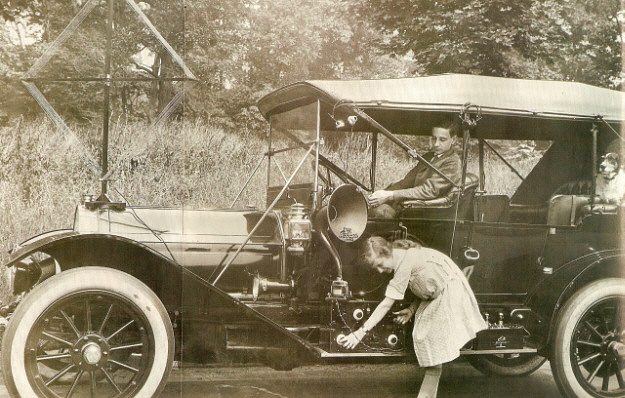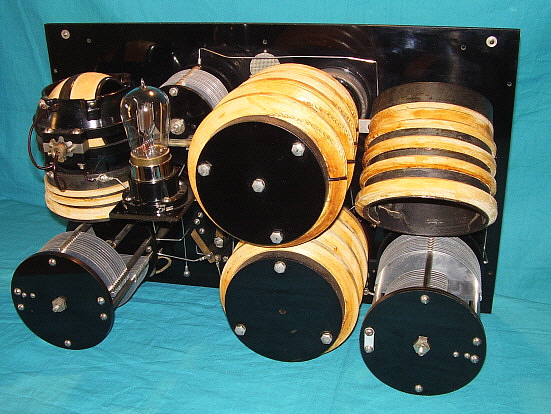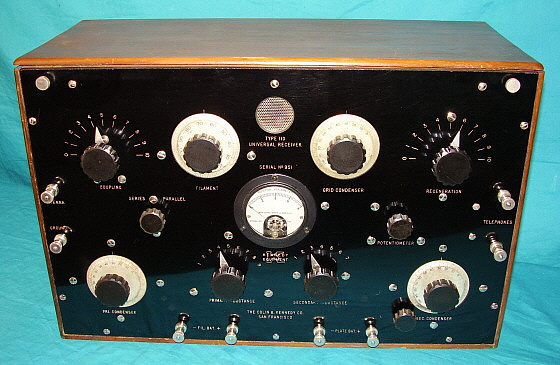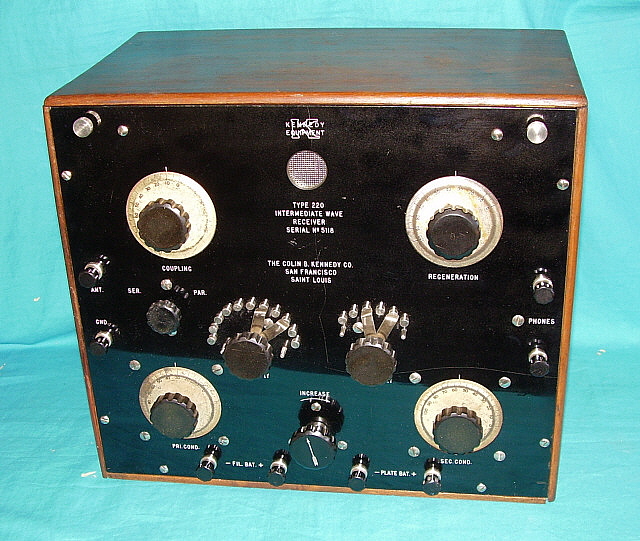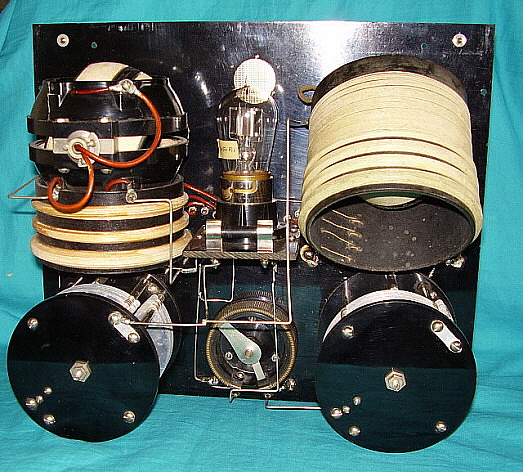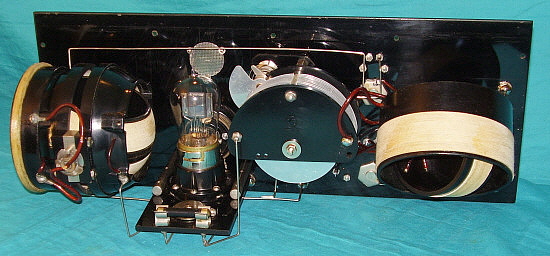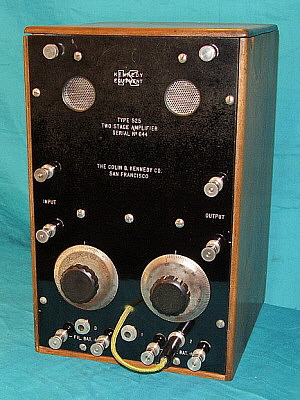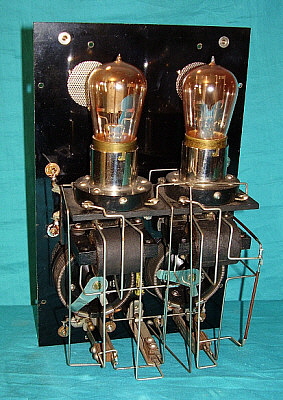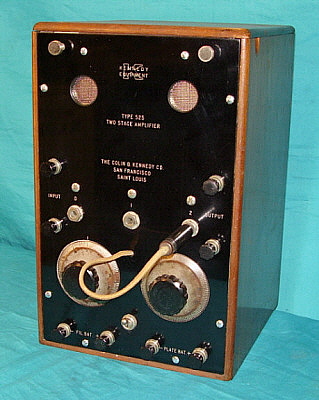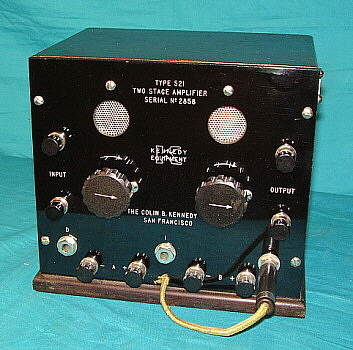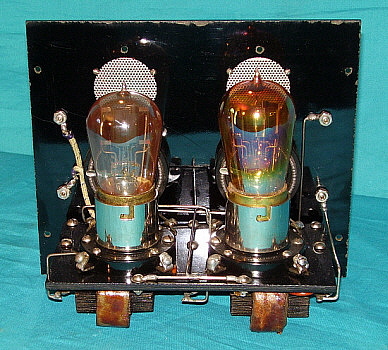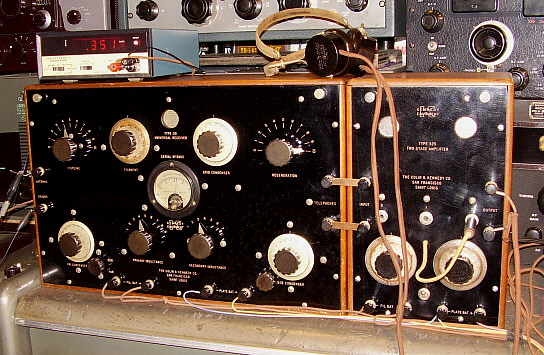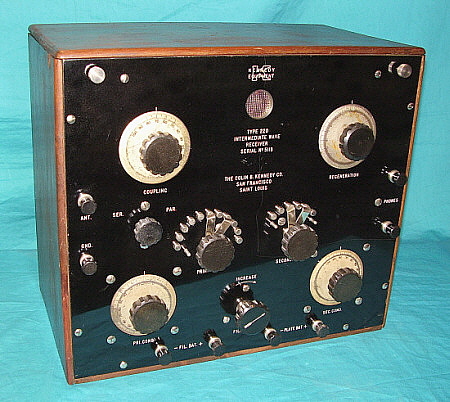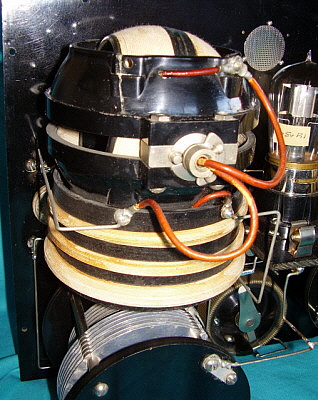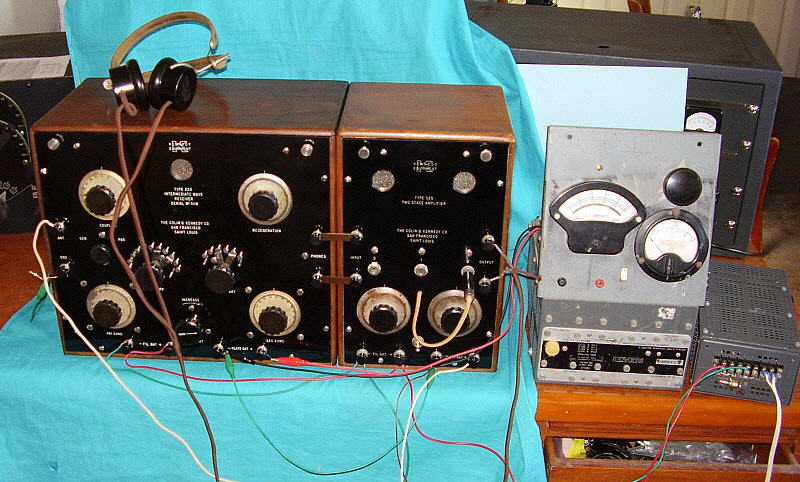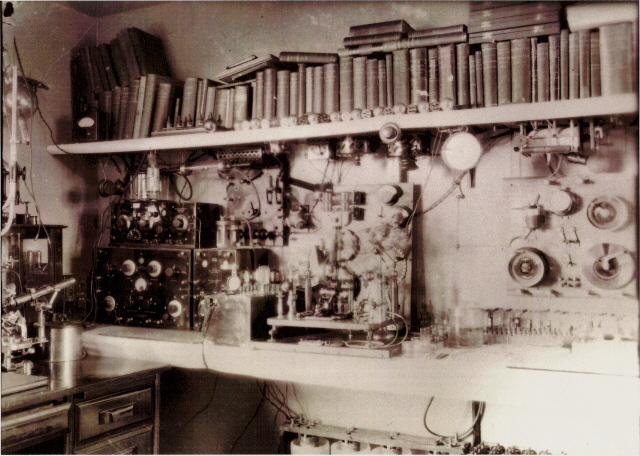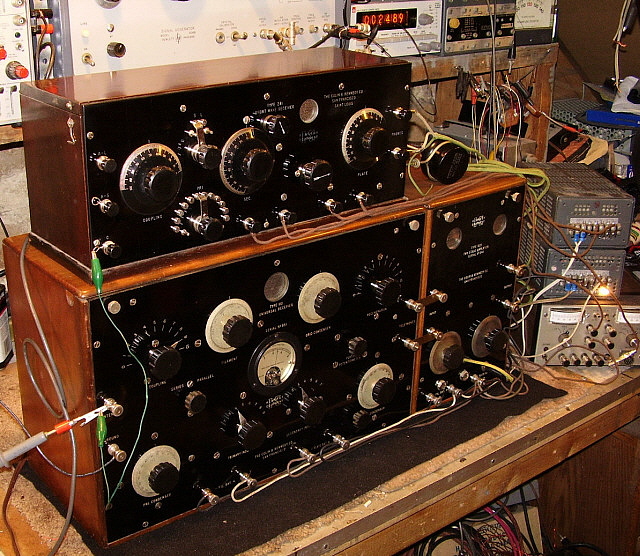Test Results - On March 17, 2009, from
22:00 to 22:30 PDT, I was able to tune in 25 NDBs from the USA and
Canada. Best DX was ZP on 368kc located at Sandspit, Queen Charlotte
Islands, British Columbia. ZP is not a difficult station to receive as
it is running at least 1KW. Most difficult was probably ULS 395kc
located in Ulysses, Kansas. BBD 380kc located in Brady, Texas was also
tuned in. These both are 25 watt "marker beacons" with a distance of
about 1500 miles from Virginia City, Nevada. Other interesting NDBs
tuned in were WL 385kc in Williams Lake, BC, Canada and MW
408kc Moses Lake, Washington.
Tuning in NDBs is made more difficult because of the hand-capacitance
problem. By tuning the station slightly lower in frequency than
resonance, when the hand is removed the drop in capacitance increases
the tuned frequency and hopefully the station will be then tuned to
resonance. With a little practice it becomes almost instinct to tune
NBDs in this manner when using the Kennedy Universal operating
as an autodyne detector. |
Log of NDBs received March 17, 2009 from 22:00 to 22:30
PDT using Kennedy Universal SN5403 with 525 amplifier.
338kc - PBT - Proberta, Red Bluff, CA
368kc - SIR - Sinclair, WY
338kc - RYN - Tuscon, AZ
371kc - TVY - Tooele, UT
332kc - LBH - Portland, OR
383kc - PI - Tyhee, ID
335kc - CC - Buchanan AF, Concord,CA
385kc - WL - Williams Lake, BC, CAN
329kc - TAD - Trinidad, CO
389kc - YWB - West Bank, BC, CAN
344kc - FCH - Fresno,CA
380kc - BBD - Brady, TX
350kc - NY - Enderby, BC, CAN
395kc - ULS - Ulysses, KS
351kc - NO - Reno, NV
400kc - QQ - Comox, Van.Is.,BC, CAN
359kc - BO - Boise, ID
404kc - MOG - Montegue, CA
356kc - MEF - Medford, OR
408kc - MW - Moses Lake, WA
368kc - ZP - Queen Charlotte Is,BC,CAN
414kc - LYI - Libby, MT
367kc - SX - Cranbrook, BC, CAN
411kc - RD - Redmond, OR
371kc - ITU - Great Falls, MT |
NDB Stations tuned in March 29, 2009LFA - 347kc - Klamath
Falls, OR
CVP - 335kc - St. Helena, MT
DC - 326kc - Princeton, BC, CAN
ONO - 305kc - Ontario, OR
YYF - 290kc - Penticton, BC, CAN
XC - 242kc - Cranbrook, BC, CAN
GLS - 206kc - Galveston, TX
AEC - 209kc - Base Camp, NV
SF - 379kc - SF Int'l AP, SF, CA
|
